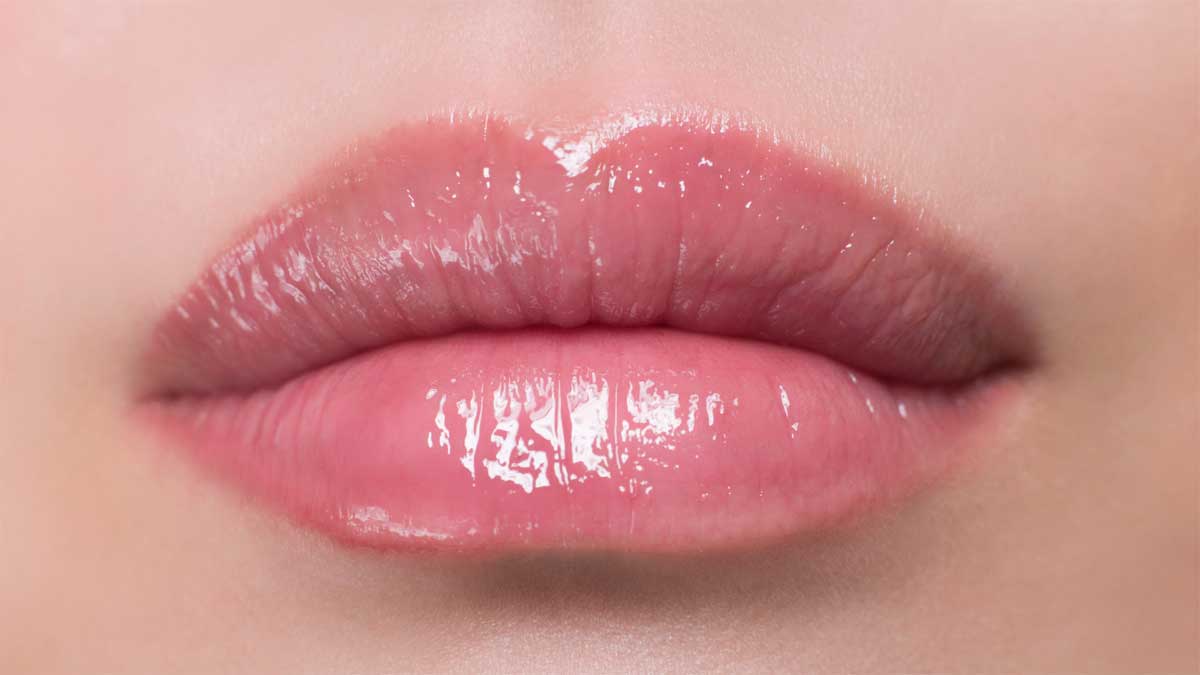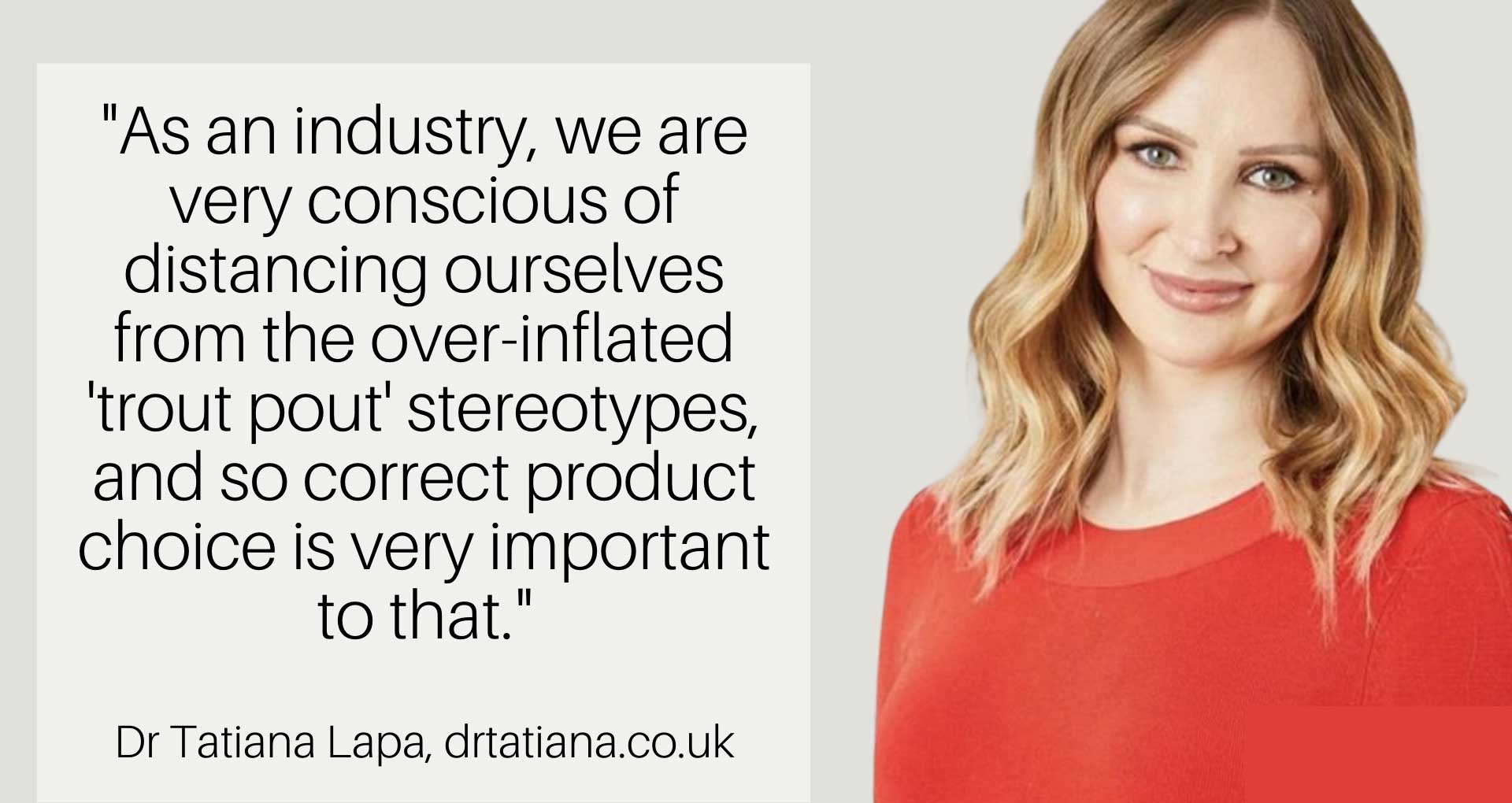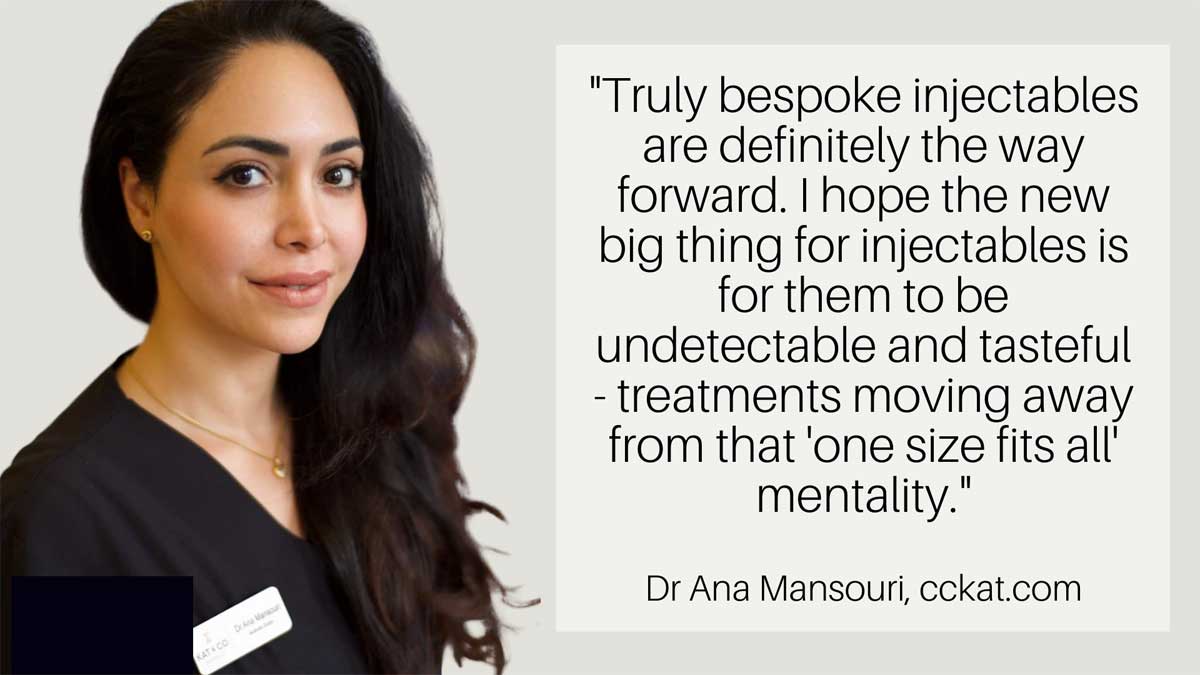
It’s safe to say that lip fillers are an aesthetic treatment here to stay – with this procedure’s popularity and fanbase going from strength to strength; year on year.
Aesthetic practitioners use various techniques to achieve a patient’s desired look – with brands such as Juvederm, Stylage and Teoxane being some of the main players used for these treatments in the UK. But what if during your next lip filler appointment, your practitioner used a mix of the three? Unheard of, right? Well, no – lip filler ‘blending’ (which involves injecting a combination of different products into the lips) is actually very much a thing – and a hot technique used by many of the US’ top injectors.
We asked our experts to give us the lowdown on this hot new technique – and whether they think it’ll be something to sweep the UK by storm this year…
We touched a little on the concept of lip filler ‘blending’ above – but in the words of the experts, what is it?
Dr Ana Mansouri, Aesthetic Doctor at Kat & Co Aesthetics gives us the lowdown, explaining, “Filler blending is an advanced technique of mixing a particular dermal filler with any other injectable product. It started out as a trend in America some years ago as traditionally, fillers didn’t come with any anaesthetic/numbing agents inside the syringe – so therefore doctors started mixing their fillers with lidocaine solution to accommodate for this.”
She continues, “Non-HA (hyaluronic acid fillers) like Radiesse are also commonly mixed with saline solution (salty water) to thin out its’ consistency – allowing it to be fanned across the skin to improve the plumpness and elasticity of saggy skin on the neck (this is otherwise a challenging area to treat).”
“Lip filler blending is a more recent trend where different brands or types of HA (hyaluronic acid) fillers are mixed or used in combination with each other to utilise a multitude of benefits. For example, a Juvederm filler may be mixed with a restyle Restylane filler. Alternatively blending within the same range of filler is also very popular, such a mixing Juvederm Volbella with Juvederm Volift.”
Dr Tatiana Lapa, Aesthetic Doctor & founder of the Dr Tatiana Clinic tells us, “There are many different types of filler that can be used in the lips – each of which have unique advantages and disadvantages. For example, one filler may be very smooth, light and better at hydrating the lips, whilst another may be more firm, volumising and better at defining the lips.
She reveals, “In some cases, the lips may benefit from a combination of two (or more!) different types of filler to achieve optimal results. For example, the lips may first need to be hydrated and smoothed and then for some definition and volume to be added. So it is not uncommon to use different types of fillers in one person’s lips; this is called blending.”
Is it really better than just using one product? Let’s talk about the benefits this technique offers patients, and why it’s a popular choice in the US.

Dr Tatiana Lapa says, “I’ve been working with dermal fillers for over a decade and I understand the importance of using the right type of filler in order to achieve the right result. This is what blending is all about. As an industry, we are very conscious of distancing ourselves from the over-inflated ‘trout pout’ stereotypes, and so correct product choice is very important to that.”
Is it really better than just using one product? Let’s talk about the benefits this technique offers patients, and why it’s a popular choice in the US.
Dr Tatiana Lapa says, “I’ve been working with dermal fillers for over a decade and I understand the importance of using the right type of filler in order to achieve the right result. This is what blending is all about. As an industry, we are very conscious of distancing ourselves from the over-inflated ‘trout pout’ stereotypes, and so correct product choice is very important to that.”
Dr Ana Mansouri explains further, “Mixing and combining different types of injectables has been common practice for many years, as we know it’s safe and the benefits are vast. Examples of this include mixing Botox with fillers around the lip area to achieve different but complementing effects, as well as allowing the filler to last longer. Another example of this is mixing dermal filler with PRP (platelet-rich plasma) where the filler activates the growth factors in the PRP. The two treatments compliment eachother making the overall procedure even more effective. It’s like 1 + 1 equals 3.”
“When it comes to blending filler, we often combine different fillers of different densities (thicknesses), depending on the tissue to be treated. It all comes down to depth and what we are wanting to achieve.”
“Blending different types of filler densities at different tissue depths allows us to provide a truly bespoke and much more delicate/tasteful result.”
‘Different filler products have different characteristics depending on their different blend of HA/hyaluronic acid (cross-linking between the HA molecules). Essentially, they have different consistency (thickness/density) and different abilities to attract water. Working with a wider range of products with different characteristics allows us to treat each patient’s tissues in truly a bespoke manner. I think of it like providing an artist with 3 vs 10 colours to paint with. One size definitely doesn’t fit all when it comes to injectables/fillers.”
Delving more into the benefits ‘blending’ offers patients, Dr Ana Mansouri continues, “When injecting lips it is firstly important to establish that increasing volume isn’t our sole purpose. The aim of the treatment will often be a combination of; improving the definition of the border (vermilion border), lifting the cupids bow, providing hydration, showing more of the pink lip (superficial or high-definition volume) or increasing projection (deep or lower definition volume). In simple terms we deal with; contour, volume & hydration.”
“The consistency of your own lip tissues varies significantly depending on the depth. The fine border is significantly different to the soft fatty tissue which lies on top of the deep dense muscle layer. Depending on where the tissues lie where your lip is lacking structure and support, we will combine the fillers accordingly. The keys is to add filler in a manner which will complement and simulate your own tissues.”
“As an industry, we are moving away from over-projected sausage-like lips and therefore the implementation of lower density lip filler is becoming more and more popular.
Also, we have seen plenty of the dreaded filler migration (filler spread) examples in the last few years. The softer the consistency of the filler used near the border of the lip, the less likely the filler is to spread outside the pink of the lip. Again here, lower density fillers contribute to higher definition, more natural and tasteful results.”
Are there any disadvantages in blending filler? Dr Tatiana Lapa says, “Using different types of filler in the lips can be more expensive as you will need to purchase more than one syringe of filler. In most cases, I would also advise my patients to have the different fillers injected over different sessions, so this will mean that you will have to come back around 4 weeks later to have more filler added. The reason for this is that we want the lighter product to settle and integrate with the lip tissue first, before adding the firmer product. This helps to ensure that the firmer product does not migrate within the lip tissue.”
Dr Ana Mansouri agrees that lip filler blending is likely to come with a higher price tag, explaining, “Combining different products and techniques will certainly bring many benefits in safety, minimising side effects as well as a favourable visible result. It is however bound to be more costly and time-consuming, yet fully worthwhile.”
She continues, “Using more than one filler will naturally be more costly due to the cost of two products rather than one. Manufacturers have however created a solution for this where some fillers come in 0.5-0.6ml syringes making the cost of two different products similar to one standard size (1ml) syringe of filler (example Belotero Lips Shape, Belotero Lips volume, Juvederm Volift Retouch, Juvederm Ultra Smile.)”
“The procedure itself tends to be more labour-some and time consuming with the use of the blending technique. Sometimes the procedure can be performed in one sitting however in other cases, dividing the treatment into a few sessions and subsequently allowing your lip to recover in between sessions will be favourable. This may on the other hand also increase the cost and time commitment required.”
Although both our experts agree this technique will become more and more popular in the UK, it isn’t an entirely new concept on this side of the pond! Dr Tatiana Lapa explains, “Blending is already being done by experienced practitioners in the UK! It may not be called ‘blending’, but choosing the most appropriate filler from our repertoire of different products, is certainly something that we always do for our patients at the Dr Tatiana Clinic.”

Dr Ana Mansouri adds, “I definitely expect this practice to become more common amongst practitioners in the UK. Generally speaking, truly bespoke injectables are definitely the way forward. I hope the new big thing for injectables is for them to be undetectable and tasteful – treatments moving away from that “one size fits all” mentality. Lip filler blending plays an important part in this.”
Dr Ana Mansouri continues, “I’ve implemented lip filler blending into my practice myself; as I find the benefits are unmatched. I don’t like to limit myself in the tools I use to achieve the best result for each patient.”
“I typically use a range of Belotero, Juvederm and Teoxane but my preference is to divide up the sessions allowing 2-4 weeks in between treatments to allow each product to fully integrate with the natural lip tissues. I find that this “little and often” method really differentiates a poor outcome with an outstanding result.”
She concludes: “Filler blending requires advanced skills, experience and an artistic eye. Therefore it is essential to choose your practitioner wisely based on their medical qualifications and experience.”